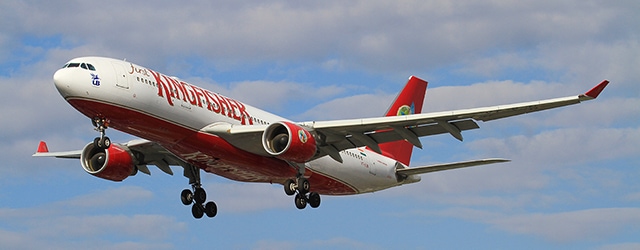High costs are pushing airlines into bankruptcy.

While 46.4 million travelers flew in the Indian domestic sector between January and April of this year, a recent report by the International Air Transport Association (IATA) states that revenue per passenger mile on India’s airlines actually fell 0.5% year-on-year.
The impact is reflected in the failure of Jet Airways, a large airline that suspended operations in April, causing 22,000 employees to lose their jobs. The company entered bankruptcy court in June.
“While the aviation potential of India is huge, it is a challenging market,” says Albert Tjoeng, assistant director of corporate communications for APAC at the IATA, in a statement for the association.
The last few decades have seen several Indian airlines rise and fall. The national carrier, Air India, is in debt to the tune of $4.2 billion, running at a loss and set to be privatized. Most recently, Air Costa suspended operations in 2017. Prior to that, carriers such as Kingfisher Airlines (owned by business tycoon Vijay Mallya), Air Sahara, Air Deccan, and Air Pegasus all either merged or ceased operations.
Tjoeng points to high operating costs, noting that fuel eats up 34% of the operating costs of Indian carriers—compared to an industry average of about 24%. “Coupled with the depreciation of the Indian rupee,” he notes, “it is a double whammy for the airlines.”
He also points to excise duties and state taxes that can climb to as high as 30%. “These issues need to be addressed to strengthen the Indian airline industry,” he says. Aviation in India supports 7.5 million jobs—including 390,000 directly and 6.2 million in tourism—and contributes some $30 billion annually to GDP, according to IATA.
The airlines surviving are low-cost carriers like IndiGo, GoAir and SpiceJet, all of which entered the market between 2005 and 2006. In the summer of 2019, more than three-fourths of the seats on domestic routes were with low-cost carriers, one of the highest proportions in the world.



